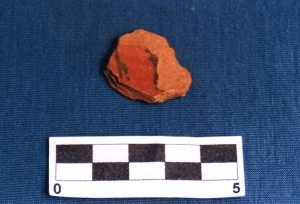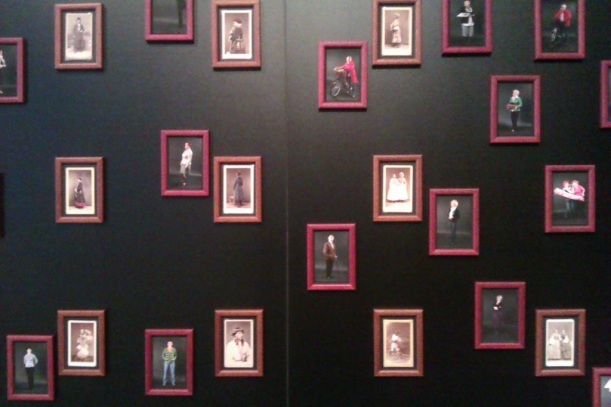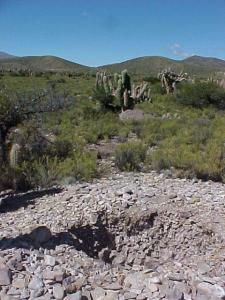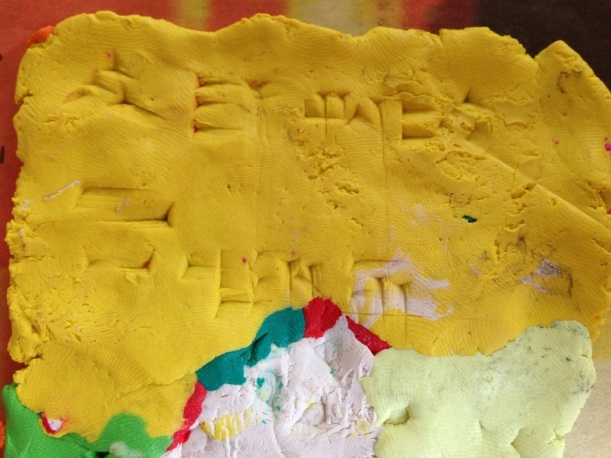Vor einiger Zeit begann ich auf Coursera einen Kurs zum Thema Universal Heritage. Da lagen schon mehrere gute Kurse zum Thema Vorgeschichte, Museum etc. hinter mir: Natürlich Archaeologys Dirty Little Secrets der unglaublichen Sue Alcock der Brown University und die MOMA-Moocs “Art & Inquiry. Museum Teaching Strategies for your Classroom” , zum Beispiel.
“Recovering the Humankind´s Past and Saving the Universal Heritage” wurde von der Sapienza Universität Rom angeboten und versprach eine Einführung zum Thema Heritage und Archäologie in der heutigen Zeit sowie das Erlernen digitaler Techniken in Forschung und Bewahrung archäologischer Funde. Das klang mehr als verlockend, denn geht es nicht darum, uns als Wissenschaft neu zu positionieren, eine Stellungnahme anzubieten zum Thema Geschichte, Vorgeschichte, Relevanz? Und das alles in einem MOOC! Großartig. Ich war dabei. Und dachte an Themen wie Indigene Archäologien, Heritage für alle, das Zugangs- und Bestimmungsrecht über Geschichte und die Debatten darüber, was Heritage sein sollte und wo die Grenzen liegen – sei es in Deutschland wie im Fall der dresdner Brücke oder vielleicht in Lateinamerika wo Heritage auch eine Frage von Abstammung und Recht ist.
Leider stellte sich bereits sehr schnell heraus, dass es hier nicht um die brennenden Eisen der Geschichtswissenschaften gehen würde. Ein älterer Professor brachte statisch sitzend und besonders langsam sprechend sowie unterlegt mit powerpointartigen Photos echte Gemeinplätze zum Thema Heritage vor. Schon die Einführungswoche mit dem Thema Was ist Archäologie, wo kommt sie her etc. zeigte, dass ich meine wenige Zeit eventuell doch anders verbringen sollte als mit diesem Seminar. Denn in diesem Kurs kamen gleich am Anfang Aussagen wie diese: “Archäologische Objekte können nie eine Aussage an sich sein”. Ach, tatsächlich? Objekte sind also stumme Zeugen, denen nur der Archäologe etwas entlocken kann? Ich glaube, ich habe die letzten Jahre einfach die falschen Bücher zum Thema Materialität gelesen. Dass Objekte und Materialität ein ganz eigenes, mit dem unseren verwobenes “Leben” haben – ich dachte, DAS wäre mittlerweile ein Gemeinplatz. Ist es aber wohl nicht. Deshalb möchte ich hier noch einmal Leseempfehlungen aussprechen:
Hahn, H.-P., 2014: Materielle Kultur. Eine Einführung. Reimer Verlag.
Hodder, I., 2012: Entangled. (Habe hier drüber geschrieben.)
Hodder, I. (Hrsg), 2011: The Meanings of Things.Material culture and symbolic expression. Revised edition. Routledge.
Oder, wenn es ganz schnell gehen soll, gerne auch nur die wenigen Seiten in der letzten Auflage von Eggerts “Prähistorische Archäologie. Konzepte und Methoden.”, 2012, Seite 305 – 318.
Wer Materielle Kultur als schweigendes Zeugnis ansieht, bei dem kann auch Heritage und all die komplexen Fragen hierbei nicht wirklich schwierig vorkommen. Logisch, oder? Da restauriert man und gibt es zurück an die Menschheit. Fertig ist die Laube! (Entschuldigung, ich verkürze und pointiere natürlich.)
Ganz ähnlich, aber auch ganz anders erging es mir mit dem MOOC zu Paläoanthropologie, der schick gemacht und sehr spannend war. Reisen nach Südafrika, in Labore, viele Interviews mit Forschern zum Thema und besonders wichtig, wie ich fand: WARUM machen diese Menschen, diese Forscher, das? Warum haben sie sich dafür entschieden, wie sind sie dazu gekommen und warum sind sie dabei geblieben? Brennende Fragen, denn sie rühren ja an das Grundthema von Wissenschaft: Warum mache ich das? Warum nehme ich viel Arbeit, und ja, auch Entbehrungen auf mich? Es war sehr spannend, Intervierws dazu zu hören. Mit Wissenschaftlern, mit Studierenden.
Wie sich in den Interviews herausstellte, war der Abenteuerfaktor ein großes Thema. Dass es so toll wäre, rund um die Welt zu reisen und spannende Dinge zu tun. Und ich bin mir ganz sicher, dass das für uns alle ein großer Faktor ist. Aber es gibt auch andere Gründe. Gründe, die unsere Forschung für viele Menschen zu einem Thema machen (können). Gerade bei der Erforschung der ersten Menschen steckt soviel drin! Hier kam es leider sehr wenig zur Sprache, bzw. es wurde wenig nachgefragt und hinterfragt. Ebenso wie das möglicherweise kontroverse Thema „Nordamerikanische Forschung in einem afrikanischen Land“. Interviewt wurden nämlich fast ausschließlich weiße, nordamerikanische Forscher. Die dann in Südafrika eine Forschung durchführen. Also, selbst als Laie würde ich sagen, da steckt einiges an Konfliktpotential drin, selbst wenn man mal Themen wie Kreationismus und Bibelgläubigkeit oder Koranfestigkeit außer acht lässt, die sicher auch kontroverse Debatten zum Thema „Hominiden“ bieten.
Ich war doch erstaunt war, dass diese Themen komplett ausgespart wurden. Das war allerdings auch schon bei ADLS aufgefallen und ich frage mich: lassen die Universitäten hier Themen aus? Gibt es Themen, die ausgespart werden, weil sie zu kontrovers sind? Oder ist es eine Art Selbstzensur der beteiligten Wissenschaftler? Wer als Forscher*in in Ägypten, Jordanien, der Karibik zu tun hat, dem glaube ich nicht, dass da keine Erfahrungen sind. Und Meinungen. Diskurse.
Und darum finde ich mittlerweile: MOOCs und Archäologie – unbedingt. Bitte! Viel davon, in verschiedensten Facetten! Aber bitte, nicht die schwierigen, kontroversen Fragen aussparen. Finanzierungen, Streits um Deutungshoheit, all das sollte auch mal vorkommen dürfen. Hier möchte ich ganz deutlich sagen, dass ich es immer wieder und immer noch sehr wichtig finde, dass wir auch diese Themen, die sich ja aus unserer Geschichte und Forschungsgeschichte ergeben, auch angehen. Dass wir sie erwähnen und die momentan dazu im Raum stehenden kontroversen Ideen erklären und weiterführen. Das ist unangenehm und es kann sehr sehr anstrengend sein – gerade wenn die Gegenseite, Laien, indigene Gruppen, werauchimmer, darauf auch kontrovers antworten und tatsächlich eine MEINUNG zu unserer Forschung haben. Aber genau darum geht es: um Kommunikation. Und das ist keine Einbahnstraße.
MOOCs zum Thema Archäologie und angrenzenden Gebieten in den letzten 12-15 Monaten:
Sapienza University of Rome on Coursera: Recovering the Humankind´s Past and Saving the Universal Heritage
University of Buckingham on Iversity: Stonehenge.
ZEIT-Akademie: Archäologie
University of Wisconsin on Coursera: Human Evolution: Past and Future.
Brown University on Coursera: Archaeology´s Dirty Little Secrets
ENGLISH VERSION
Some time ago, I started a course on the topic of Universal Heritage at Coursera. This was at a point when I had already passed through several good MOOCs on the topic of prehistory, museums and archaeology.: of course Archaeologys Dirty Little Secrets of the incredible Sue Alcock of Brown University, and the MOMA-Moocs “Art & Inquiry. Museum Teaching Strategien for your classroom”.
This specific MOOC, “Recovering the Humankind´s Past and Saving the Universal Heritage”, was presented by the Sapienza University of Rome and promsied to be an introduction on the topic of Heritage and Archaeology in modern times as well as tools for learning digital techniques in the investigation and preservation of archaeological finds. That sounded very promising. All these topics together in one MOOC: Heritage, preservation, techniques, prehistory. What came to my mind was: Indigenous Archaeology, Heritage for everybody, the access and interpretation of Prehistory and the debates about what heritage exactly is and what it could or should be. And what its limits are – be it in Germany in the case of the bridge in Dresden or maybe in Latinamerica where Heritage includes questions of descendance and birthright.
Unfortunately, I never made it to the “technical” section of the MOOC because the first sessions started with an introduction held by an elderly professor who stated, slowly speaking and with a background of powerpoint-y photos such common place enunciations about arcaheology and heritage that I decided to leave it right there. Because of phrases like: “Archaeological objects can never be a statement in themselves”. Oh, really? Objects are silent witnesses, then, and only an archaeologist might get something out of them? It seems that I´ve read the wrong books on materiality lately. That objects and materiality lead their own life, intertwined with ours, I thought that would be common place. Seems, it is not. And who sees material culture as silent witness, perceives heritage and all the complex issues associated with it as one simple thing: restaure it (HOW? WHY?), give it back (To WHOM?) – and that´s it! (I am sorry, I really DO abbreviate here.).
Similarly, although in a different way, was the experience with the MOOC on Paleoanthropology, offered by the University of Wisconsin, that was very well made and included a wide range of fascinating topics. Travelling to South Africa, visits to excavations, interviews with actual paleoanthropologists! Information on the evolution of humans! Laboratory time! And, what impressed me most was: the MOOC put an emphasis on personal experiences. Why do all these people work as paleoanthropologists? What lead them to choose this career? Why did they go on? Arduent questions because they touch the bases of scientific research: Why do I do this? Why do I spend so much time and energy on it? It was absolutely fascinating to go through these interviews with scientists and students. In the end, it turned out that the “adventure factor” was a major topic for all of them. That it´s so great to travel round the wourld and do exciting, adventurous things. And I am sure that this is a major thing for all of us. But there area other reasons as well. Reasons that (can) make our investigation a relevant topic to many other people. And the evolution of humanity is such a fascinating topic! But I would have been happy to see other subjects covered as well.
In all these interviews, as in all other MOOCs as well, controversial topics were ignored. This focus on rather “pleasant” topics in a MOOC has been present in every single one of them. Controversial subjects are being left out completely. Is this part of the official idea of doing a MOOC? Are the universities involved or is it the scientists themselves that exclude these topics in order to create a more “harmonious” MOOC? I assume that investigators working in countries like Egypt, Jordan, South Africa or the Caribbean have some opinions on controversial archaeological subjects in their study regions?! There have to be experiences, opinions, discourses? And that is why I came to think about MOOCs and Archaeology as a complicated subject.
Archaeology & MOOCs – great! But please, don´t exclude controversial topics. Let´s be more open about the subjects that concern scientists and other people alike. Let´s face difficult questions on participation as well, not only the nicer, more adventurous subjects. Problems of financiation, the power and access to interpretation – all these should have their own space in the MOOCs as well, among others. These topics, that accompany Archaeology for as long as it exists should have a right to appear and to be discussed in MOOCs. Especially there, because of their open and interactive online nature! Why don´t discuss the controversial ideas as well as the “harmonious” ones? Yes, this can be more unpleasant and time consuming than just talking about our latest adventure in the jungle, but it may be more fructiferous, as well. Many people have opinions on archaeology. And we can learn how to listen to them and interact. Because this is the point: communication! This is not a One-Way Road.
MOOCs on Archaeology and similar topics in the last 12-15 months, partially covered in this blog:
Sapienza University of Rome on Coursera: Recovering the Humankind´s Past and Saving the Universal Heritage
University of Buckingham on Iversity: Stonehenge.
ZEIT-Akademie: Archäologie
University of Wisconsin on Coursera: Human Evolution: Past and Future.
Brown University on Coursera: Archaeology´s Dirty Little Secrets





